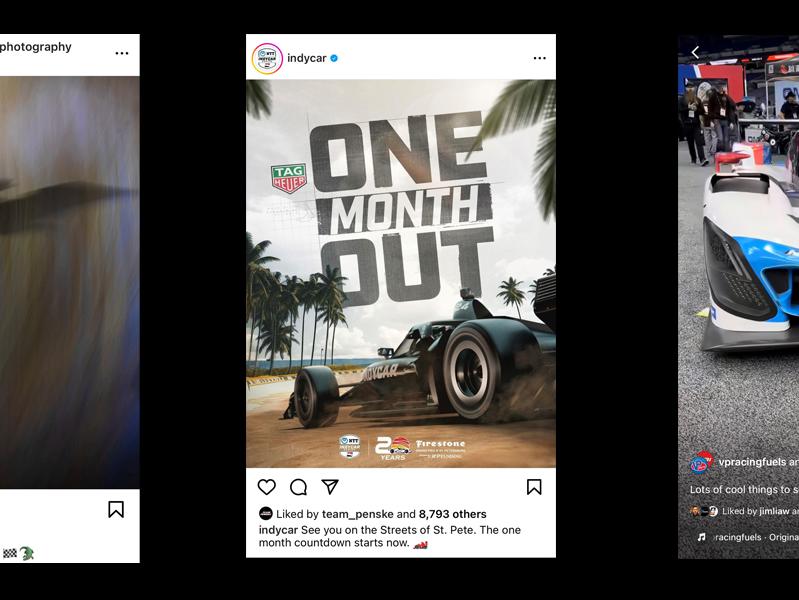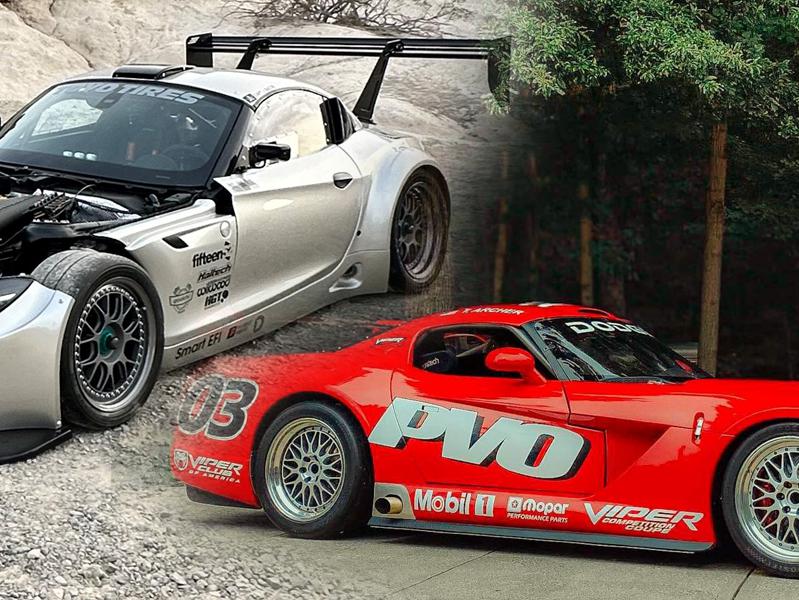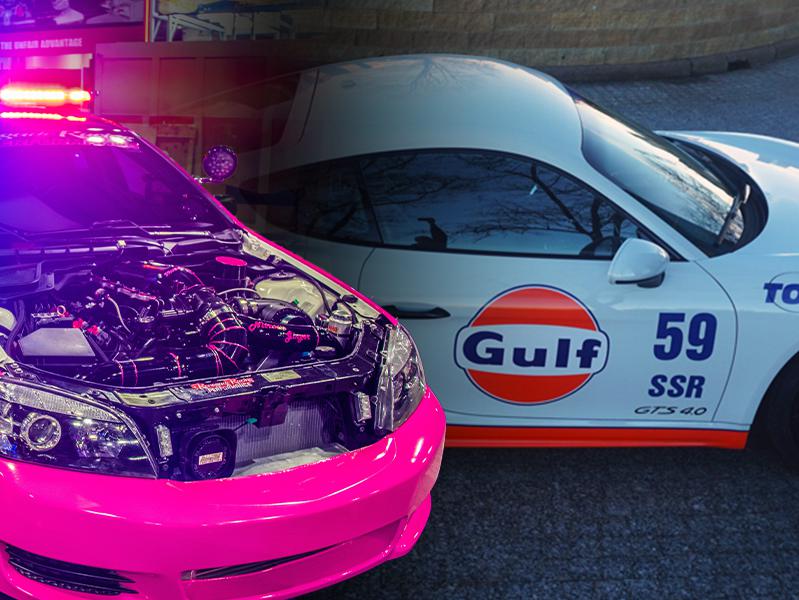Business Profile: Funduro Racing
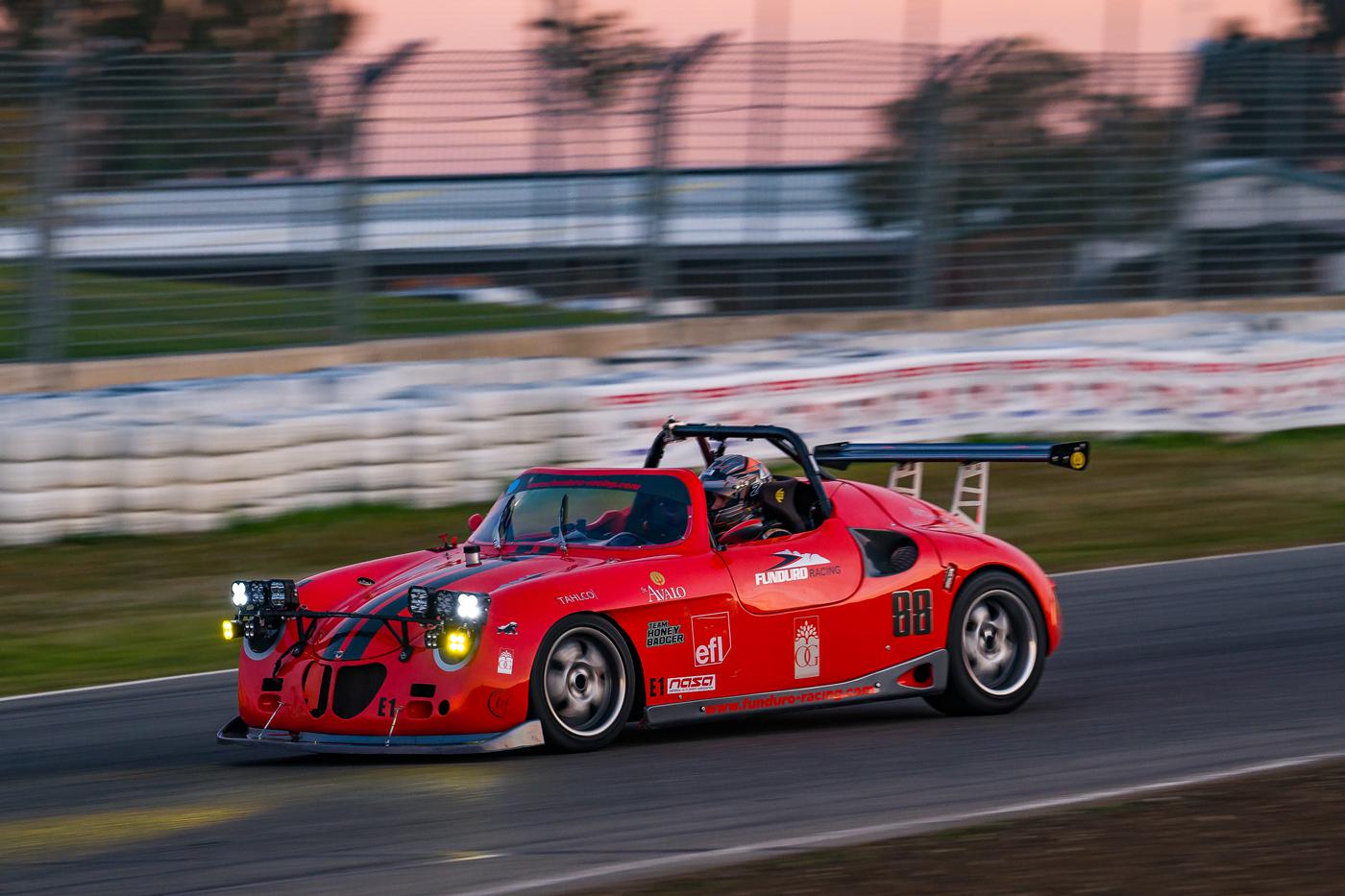
With its mid-engine, tube-frame chassis and two-seat cockpit, Funduro Racing’s Roadster Cup car offers an authentic race car experience, with the bonus of in-car coaching, at a price point that’s surprisingly competitive in the HPDE market.
Nicolas De Keijser is on a mission to bring the motorsports experience to the masses. “How can I democratize access to race cars?” is the question that drives him. “Making the fun of racing accessible to all—that’s what I’m looking for.”
Nestled in the paddock at Thunderhill Raceway in Willows, California, De Keijser’s Funduro Racing seems like a good start toward his stated goal. Keeping the business model simple, Funduro rents seat time in the company’s own Roadster Cup race cars for high-performance driving events (HPDE), private track days, and, for qualified drivers, real competitive racing in a range of West Coast enduros, including the 25 Hours of Thunderhill, where in 2021 the Funduro team finished first in Class E1. “It’s all 100% arrive and drive,” De Keijser added. “I own the cars, and I rent the seats. I make it simple, so everyone has a good time.”
REAL RACE CARS
What makes Funduro “fairly unique,” De Keijser insisted, is “the cost of what I offer for a real race car experience.” He brings his own impressive background to the table: More than 20 years of endurance racing, including 10 years in various European Touring Car series, as well the VW Fun Cup, a spec series which his father, Benoit De Keijser, co-founded in 1996. But Nicolas would prefer to talk about Funduro’s Roadster Cup cars, which he and his father helped develop in 2004 as “a natural progression” of the VW Fun Cup. Like the Beetle-bodied Fun Cup, the Porsche-esque Roadster Cup is powered by a relatively economical 1.8- or 2.0-liter VW-Audi engine mounted just ahead of the rear axle in a purpose-built, tubular space frame. Roadster Cup cars raced in the Belgian Touring Car Series (BTCS) and enjoyed their own spec series in 2005–2010. And because they are engineered purely as race cars, said De Keijser, Roadster Cup cars deliver a more visceral driving experience than any street car that’s been modified for racing.
“The car is very analog,” De Keijser explained. “It has no driver aids. It has a manual gearbox, no power steering, no power brakes, so you get a lot of feedback. You are driving everything. It’s high-performance, but it’s approachable.” And because the mechanically simple Roadster can be maintained for literally a fraction of the cost of a newer, high-performance road car, Funduro can offer HPDE at prices “comparable to a Miata rental. Miatas are great, but we give you a race car feel you can’t get in a Miata.”
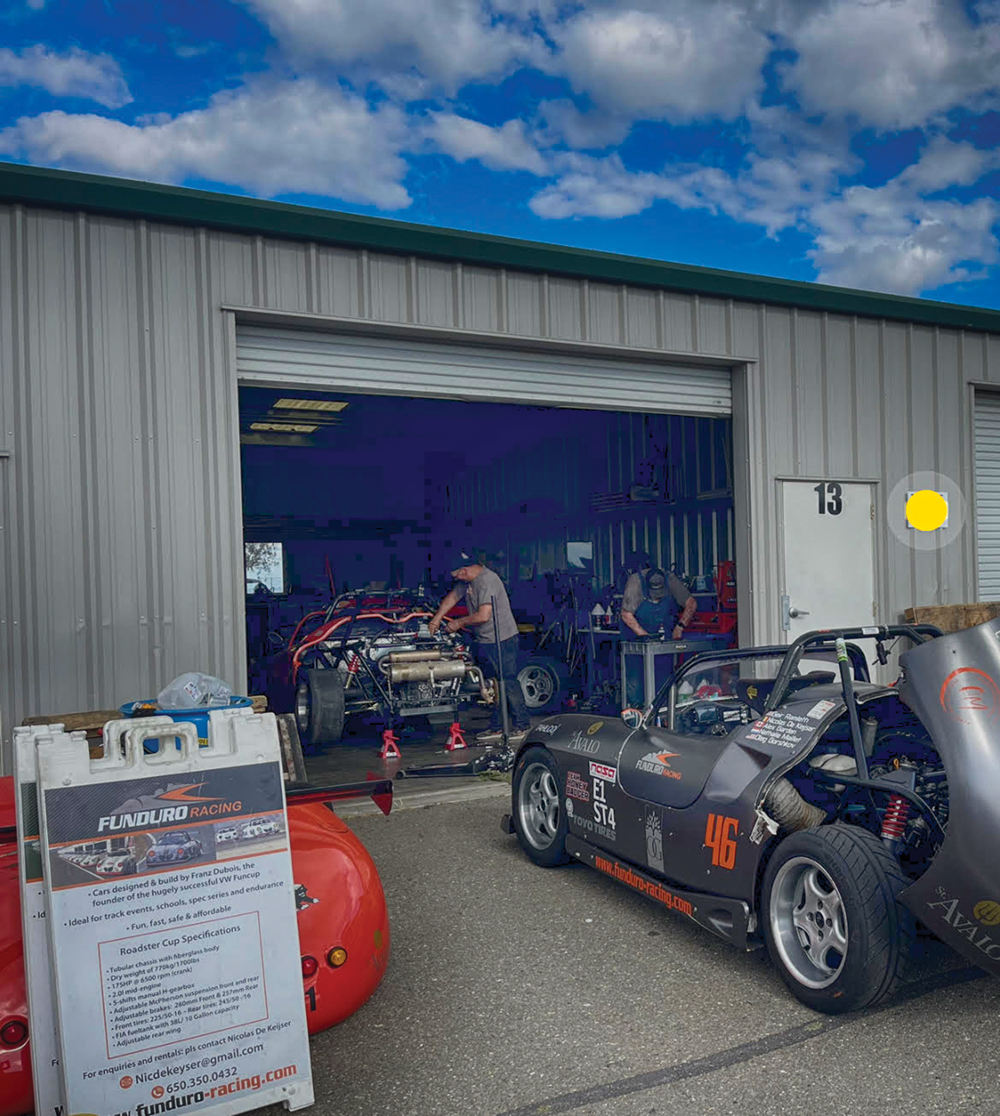
“It might even be a bit more affordable than renting a Miata,” commented Jo Voordeckers, who drove track days in Belgium, France, and Germany—on the Nürburgring, in fact—before emigrating to the United States, where he met De Keijser through mutual friends. “I’ve driven a spec Miata, and there is a night-and-day difference. A fully prepped, fully built race car is so different from a production vehicle that has been beefed up so you can drive it on a track. From the first time I got in a Roadster Cup I knew exactly what I wanted from that point on. My thoughts of buying my own car for track days or racing were over.”
“The chassis is incredible, the brakes are incredible,” explained Alex Garden, who campaigns an ex-Bill Brock Formula Atlantic race car when he’s not driving with the Funduro race team. “It drives a bit like a slightly heavier shifter kart, and it can run with cars that, on paper, should be much faster.” With just 160–180 hp, “it is a momentum car; you have to carry a lot of speed through the course, because it doesn’t have a lot of juice to get going. But, man, it has crazy-good handling.”
Garden found the Roadster Cup “unbelievably predictable” and “very forgiving. You can push it way past the envelope, and it will let you know, ‘Hey, you’re here, and this is how much I have left.’ Which is kind of fun because you can really hammer it.”
Another important feature of the Roadster Cup is its two-seat bodywork, which allows De Keijser to accompany his customers on the track—“and in a race car,” he noted, “that’s hard to come by. It’s something that we offer that is extremely valuable.”
Voordeckers agreed that he “absolutely” gained confidence from De Keijser “sitting next to me and giving me pointers. He eased me into driving an actual race car—going from a production vehicle with ESP and ABS and road tires, to slicks and no assists. He’ll say, ‘It’s okay, you can go faster. You can brake later. Listen, you can trust me.’ These are things that someone has to tell you, or you would stay far, far away from the limits.”
“The part I enjoyed most was riding with Nick,” added Tim Hurlbut, a 40-year veteran of time trials and track days, whose most recent ride was a fully race-built BMW E36. “When you watch someone who is truly talented, you clearly know what the car can do—and it gives you something to shoot for.” When Hurlbut took the wheel, De Keijser “helped me drive the line and use the car’s full capabilities. I really appreciated having the guy who owns the car sitting next to me saying, ‘This is what will happen if you do this, and this is what will happen if you do that.’”
DOWN TO BUSINESS
That said, competitive endurance racing is as important to De Keijser as his HPDE business, and he divides his time about equally between them. “In terms of revenue, there is a bit more in racing, but track days are really stable,” he explained. “They are a good business for keeping fixed costs under control, because with track days you can better predict how you are going to cover your costs. I have fixed costs such as shop rent, but [with HPDE] even the variable costs are easy to predict.” Whereas with racing—an ironic laugh here—“things can go off in many directions.”
Funduro’s corporate (and other group) track days at Thunderhill Raceway can accommodate between 10 and 30 people, who bring widely varying levels of skill and familiarity with high-performance driving. “Often they are novices,” De Keijser noted, “so they require a bit of coaching. Sometimes they have to learn how to drive a manual shift—and that’s an interesting experience. But we bring them through the whole idea of what it’s like to drive a race car, and I think the uniqueness of that experience versus the cost is pretty amazing.
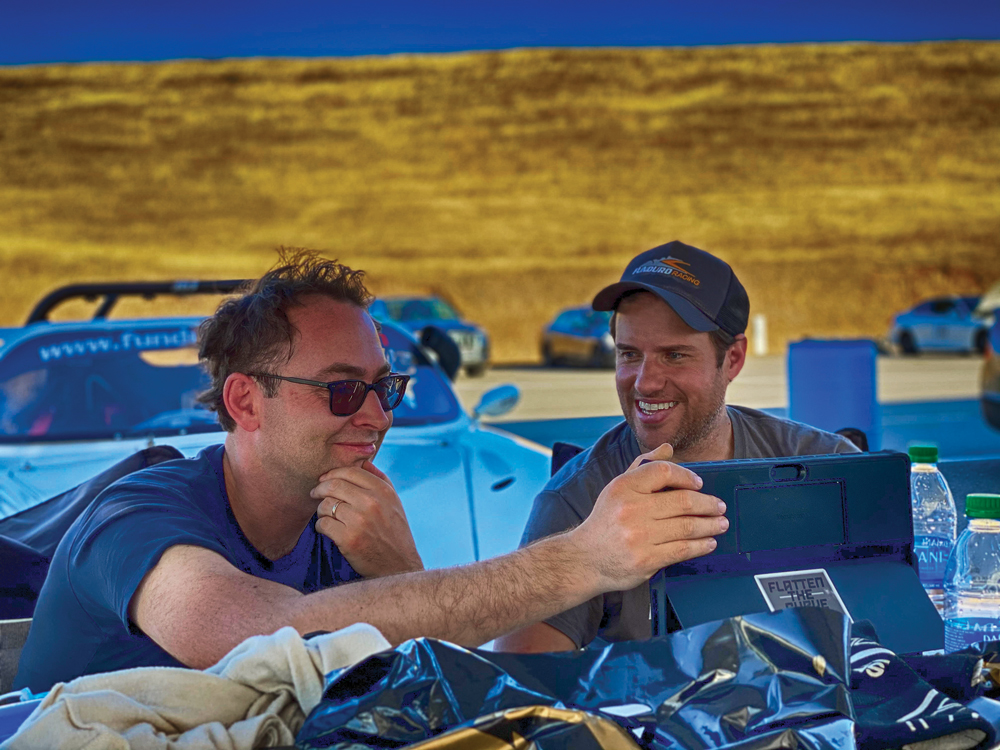
“But for the ultimate experience, we offer true private events, limited to one to four customers, and where we have exclusive use of the track. This provides the opportunity for enhanced one-on-one mentoring while also making the business more viable.”
Always, De Keijser strives for “a pleasant, family-style atmosphere. My wife Ann, my children Matthew and Mika, and sometimes even my parents help with logistics, making sure that everyone is taken care of with food, accommodations, information, a place to change and relax, etc. Even our dog (and team mascot) Maui helps keep our guests entertained,” he added.
Again, De Keijser emphasized how his HPDE and racing activities complement each other. “Could I make a living out of track days? No,” he answered, “and I don’t think anyone would ever tell you that they could. Even if you had good margins, you would need enormous volume. As I said earlier, it’s a way to keep the cost of your race team under control—and if you have a good season in racing, you can grow your business that way.”
FROM TRACK DAY TO TRACK CHAMPION?
It would be a mistake, also, to count on HPDE customers becoming racers. “I’ve seen a little bit of everything,” said De Keijser. “I’ve seen people just stick to track days with us. I’ve seen people start with us, and they move on to a different platform, and that’s fine. We also have customers who were already racing, and they rent our car because they want to try something new. And they become good customers.
“I think at the end of the day, someone who wants to race has a commitment to racing—you need a certain level of commitment if you are going to race—and they will find a path that allows them to do that. It’s not because they rented a car from me. They had it already in their mind.”
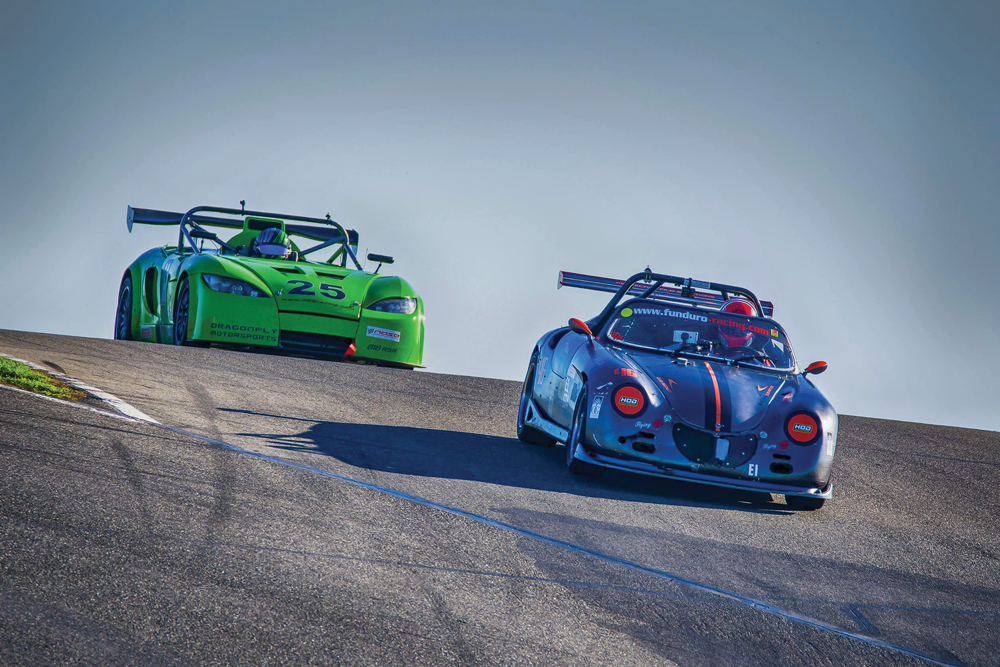
Remember Voordeckers, who had considered “buying my own car for track days or racing” before his experience with Funduro? Early last year he drove in his first race, completing 90 minutes of a seven-hour event with the Funduro team at Sonoma.
“We have a number of racing customers that we have been working with for several years now,” De Keijser added, “and new customers are coming in. Of course, there is some cycling, but ideally you can keep the customers for a longer time and do entire seasons with them. I enjoy developing a team and sharing my long experience with endurance racing in Europe.
“We run in NASA WERC”—the Western Endurance Racing Championship—“and in Lucky Dog,” including events at Fontana, Willow Springs, Laguna Seca, and Sonoma. “We’ve done the 25 Hours of Thunderhill three years in a row.”
Some of Funduro’s more seasoned racing customers attested to De Keijser’s organizational skills. Geir Ramleth, who runs a 1963 Lotus 23B in the Classic Sports Racing Group and competes in Formula Atlantic with a 1982 Ralt RT4, shared Funduro’s class win at Thunderhill in 2021 and raced with the team again in 2022. He remarked on how De Keijser enlisted his family in the effort, “and they really knew how to run an endurance race. They planned the whole thing from beginning to end. It’s not only getting the car ready. It’s organizing work in shifts, cycling the drivers, assuring that people are getting fed and getting rest. And they knew exactly what to do.”
“Nick is extremely well organized,” agreed Oleg Gorshkov, who has competed in the 25 Hours of Thunderhill since 2016—with Funduro since 2018—and more recently joined a Porsche Cayman team in WRL GT1. With Funduro, “the car is extremely well prepared. I’ve been on teams where the car was not prepped at all, or it was prepped on practice day. With Nick, you show up and the car is ready. And the crew is very professional. He has seven or eight technicians for one car—which is a lot.”
“The cars are prepped correctly,” Garden confirmed. “Everything runs on-schedule.”
For Ramleth, just as impressive as Funduro’s 2021 win was how well the organization held together when the mechanical parts didn’t in 2022. “We had a couple of engines and a transmission go bad,” Ramleth recalled. But in addition to his crew in California, “Nicolas had brought over a team of mechanics that he had worked with in Europe, and they did not know how to spell DNF. They just kept us going.”
OBSTACLES AND ENDURANCE
Satisfied customers like these, De Keijser contends, are the best possible promotion. “I’m getting to be known, and when people talk about you, that’s usually where new customers come from.”
Of course, De Keijser is not the first to tell us that, nor is he the first to note the challenges of promoting a business through social media. “I have a Facebook page, I have Instagram, and I have my website, which is where I get the most Internet traffic. My social media presence is marginal, but that’s self-inflicted. Social media has to be cultivated. You have to stay active on it or it’s hard to stay relevant. For a website, the most valuable thing is to be prioritized by the search engine—and I am not, because that costs money.”
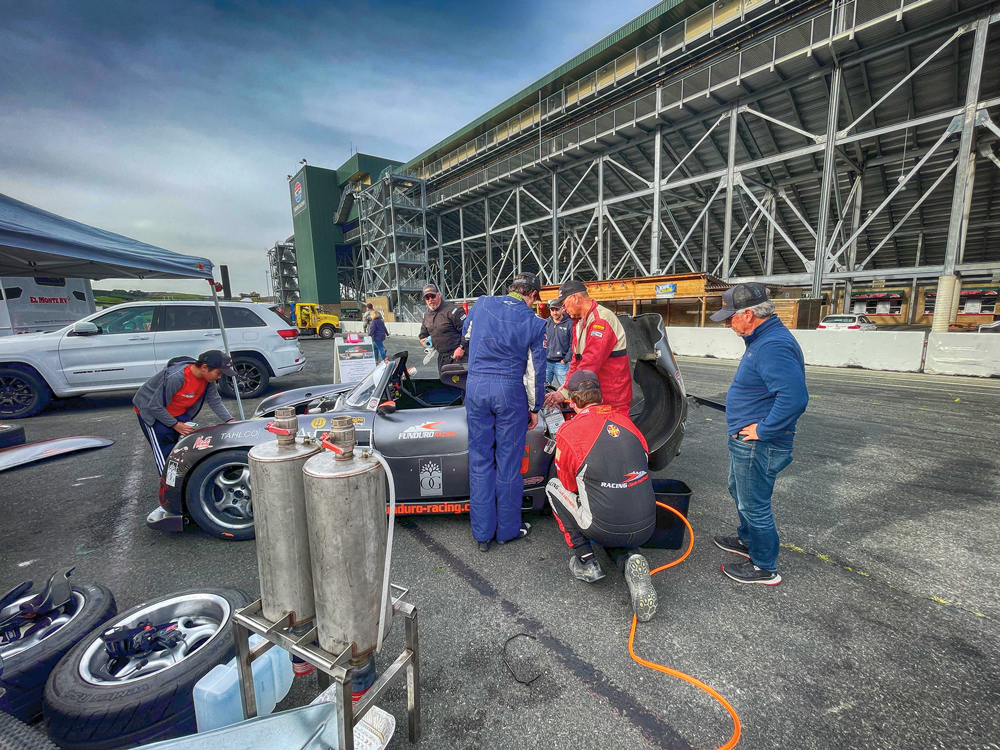
One very simple, no-cost promotion that De Keijser does recommend is a marker showing his location on Google Maps. “My son Mika, who just started competitive karting, helped me with that. Now when people look up Thunderhill, they see the name of my company, too.”
De Keijser expressed some frustration, also, with racing sanctions that “have no obvious class for my car,” and so tend to default to classing it where it’s less competitive. NASA, with its “more open rules,” offers a better fit than some others, but still penalizes “non-production” (e.g., tube) chassis—which De Keijser finds ironic, arguing that “tube-chassis cars bring a more real race-car feel at a lower cost, for similar performance, than a stock-based car.” Fortunately, in endurance racing, “even if you are not ideally classed, you can bring forward other attributes to be competitive. We’ve proven it. But it’s a lot harder to do that in a 20-minute race.”
When we asked De Keijser if he would consider prepping and maintaining customer-owned cars, he said that was “definitely a path forward,” albeit one he has not yet taken. Growth could also come from “sponsorship or, alternatively, customers who are wealthier, but then you are working in a different tranche of the business. And it would be against the concept of racing for the masses.”
De Keijser plans to import more Roadster Cup cars. With his father he owns an even dozen, but only three are presently garaged in California. The rest are in Belgium but bringing them over is “in the cards.”
What De Keijser would “love to see” is “something similar to the VW Fun Cup in the United States—a single-make endurance series. You would need to have an association with the manufacturer, and I don’t have that recognition,” nor, he allowed, the necessary capital “to get something like that started. But I believe in the concept. If you look at the World Racing League, or Lucky Dog Racing, they are bringing endurance racing to the masses, but with all sorts of cars. The same concept with VW Fun Cup or Roadster Cup cars would be fantastic.”
 MEMBERSHIP LOGIN
MEMBERSHIP LOGIN JOIN PRI
JOIN PRI
